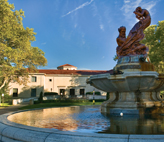Past Exhibitions
Data (after)Lives: The Persistence of Encoded Identity
September 8 - October 14 2016
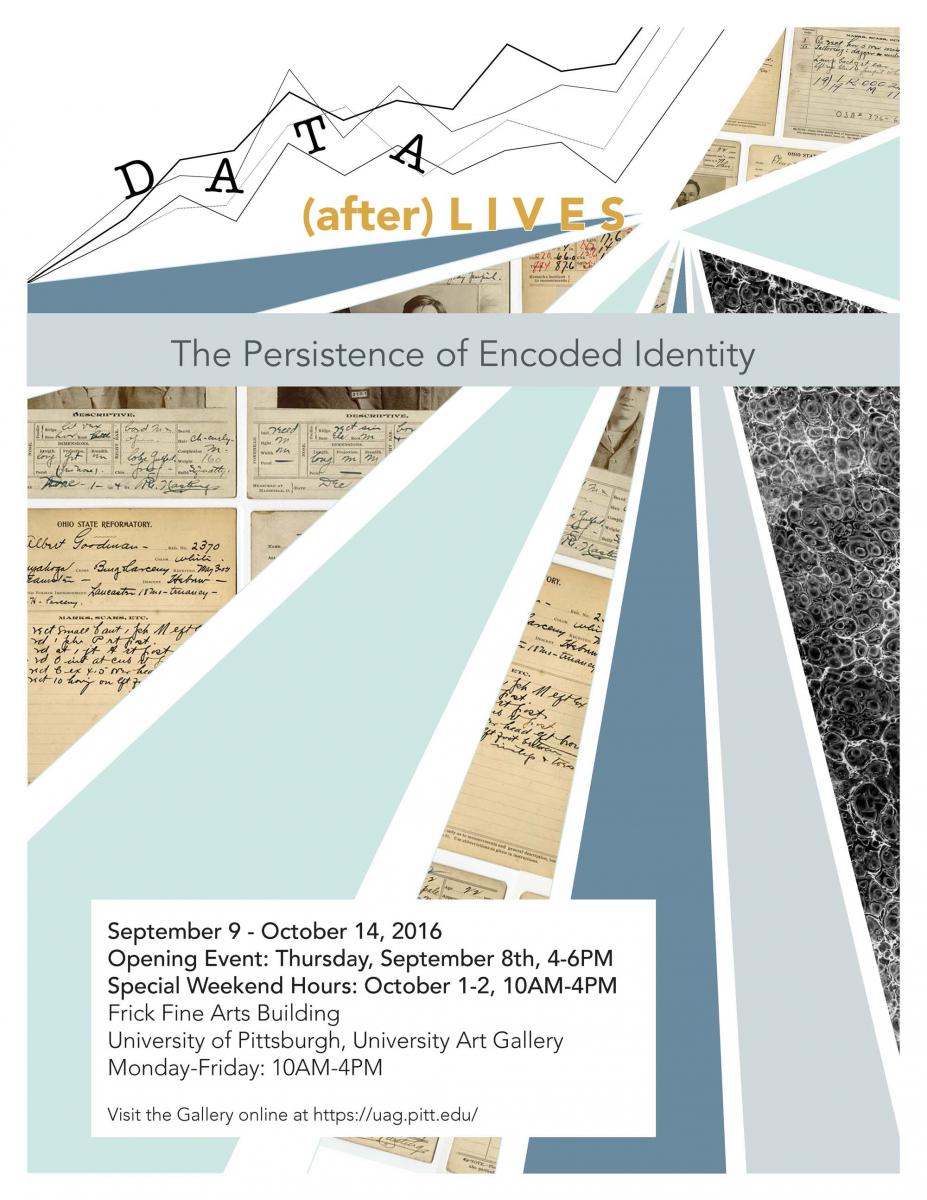
Co-curated by three local scholars: Josh Ellenbogen and Alison Langmead, faculty from the Department of History of Art and Architecture at the University of Pittsburgh, and Rich Pell, faculty from the School of Art at Carnegie Mellon University. Additionally, a graduate student from the department of History of Art and Architecture recreated a historical exhibition of Brazilian artist Letícia Parente, originally shown at the Museum of Modern Art in Rio de Janeiro in 1976.
This exhibition features the work of Heather Dewey-Hagborg, Aaron Henderson, Steve Rowell, The Center for Land Use Interpretation, Paul Vanouse, and the Center for PostNatural History in Pittsburgh.
Special Exhibition: Strange Beauty: Radiography from Fukushima
March 15-18, 2016

Panelists included the photographer Takashi Morizumi, Patricia DeMarco Ph.D., and Zeba Ahmed who participated in a study tour last June while on a Fulbright Fellowship in Japan and will share her experience and what she learned about the conditions in Fukushima. See flier for details.
Stories Untold: Where Mental Health Meets Creative Expression
February 12 - March 4, 2016
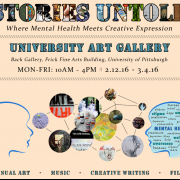
Stories Untold is a multimedia mental health art exhibition that aims to promote understanding of the student experience with stress, mental illness and perspectives on mental health advocacy. Thanks to overwhelming support in 2015, we are continuing with new pieces.
The Spring 2016 Stories Untold exhibit featured over 50 works from students across Pitt's campus and the Pittsburgh area. Submissions include student experiences with stress, anxiety, depression, and other mental illnesses. This socially engaging art experience aims to create a more inclusive and open campus and community, especially regarding matters of mental and emotional wellness.
Studio Arts Summer 2015 Creative Research Exhibiton: Wyoming Field Study & Undergraduate Research Awards
January 15 - February 5, 2016
The Studio Arts Summer 2015 Creative Research Exhibition featured the work of students participating in the Summer 2015 Studio Arts Field Study in Wyoming offered through the University Honors College and Studio Arts Research Fellows conducting independent research through the Dietrich School's Office of Undergraduate Research.
Participating artists: Megan Beck, Alyssa DiFolco, Sofia Sandoval, Stephanie Taylor, & Victoria Woshner
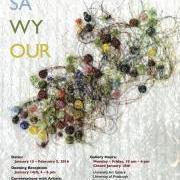
Esposure: Black Voices in the Arts
November 10 - December 11, 2015
The University Art Gallery on the Oakland campus presented “Exposure: Black Voices in the Arts”, a student-curated exhibition that celebrates the artwork of local Black artists.

The 2015 Studio Arts Student Exhibiton
April 1 - April 25, 2015
The 2015 Studio Arts Student Exhibition featured the work of graduating Studio Arts majors along with exceptional works by majors and non-majors from the range of Studio Arts courses.
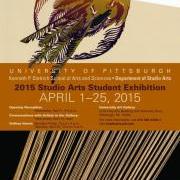
Exhibiton^3: Documenta 5, Herald Szeeman, The Artists
February 25-March 20, 2015
Exhibition^3: Documenta 5, Harald Szeemann, The Artists is built around a loaned exhibit from the Independent Curators International and will be curated by Professor Terence Smith, Gallery Curator Isabelle Chartier, and the University of Pittsburgh Museum Studies Exhibition Seminar students. Szeemann’s artistic direction of Documenta 5, held in 1972 in Kassel Germany, is explored through 40 items and associated documents that constitute Harald Szeemann: Documenta 5, curated by David Platzker. This will be supplemented with two carefully curated rooms, one delving into the career of Harald Szeemann, and the second exhibiting a collection of books, catalogs, and other documentary material, created at the time of Documenta 5, by or about artists involved in the original 1972 exhibition.
Exhibition^3 will immerse the visitor in the experience that was Documenta 5 in 1972; in the curatorial imagination of Harald Szeemann as it developed during his career; and in the interrogations undertaken by the artists who transformed art during the 1960s and 1970s. Immerse yourself in the hyper reality of Documenta 5, meet the artists who filled its halls, and delve into the career of the most successful and innovative curator of all time, Harald Szeemann.
For additional information, contact uag@pitt.edu or 412-648-2423.
University Art Gallery - University of Pittsburgh www.haa.pitt.edu/art-gallery
And check out the article in the Trib http://triblive.com/aande/museums/7908752-74/art-exhibition-smith#axzz3U...
The Museum Studies Exhibition Seminar is made possible with the generous support of the Fine Foundation and the Office for Undergraduate Studies of the Dietrich School of Arts and Sciences at the University of Pittsburgh.
Harald Szeemann: Documenta 5 is circulated by Independent Curators International (ICI), New York. This exhibition has been curated by David Platzker. The exhibition is made possible, in part, by a grant from the Horace W. Goldsmith Foundation; the Andy Warhol Foundation for the Visual Arts; the ICI Board of Trustees, and ICI Benefactors Barbara and John Robinson.
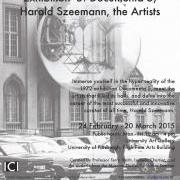
Studio Arts Summer 2014 Creative Research Exhibition
January 15 – February 6, 2015
An exhibition of work from students who participated in the Summer 2014 Studio Arts Field Study in Wyoming, offered through the University Honors College, and Studio Arts Research Fellows conducting independent research through the Dietrich School's Office of Undergraduate Research and the ACCIAC Fellows Program in Creativity and Innovation
Participating Artists: Theresa Baughman, Rachel Lehman-Merrick, Melissa Reese, Rose Savage, Sara Savage, and Nicole Somplatsky

Restrike: Uncovering the Life and Work of Gertrude Quastler
November 11-December 5, 2014
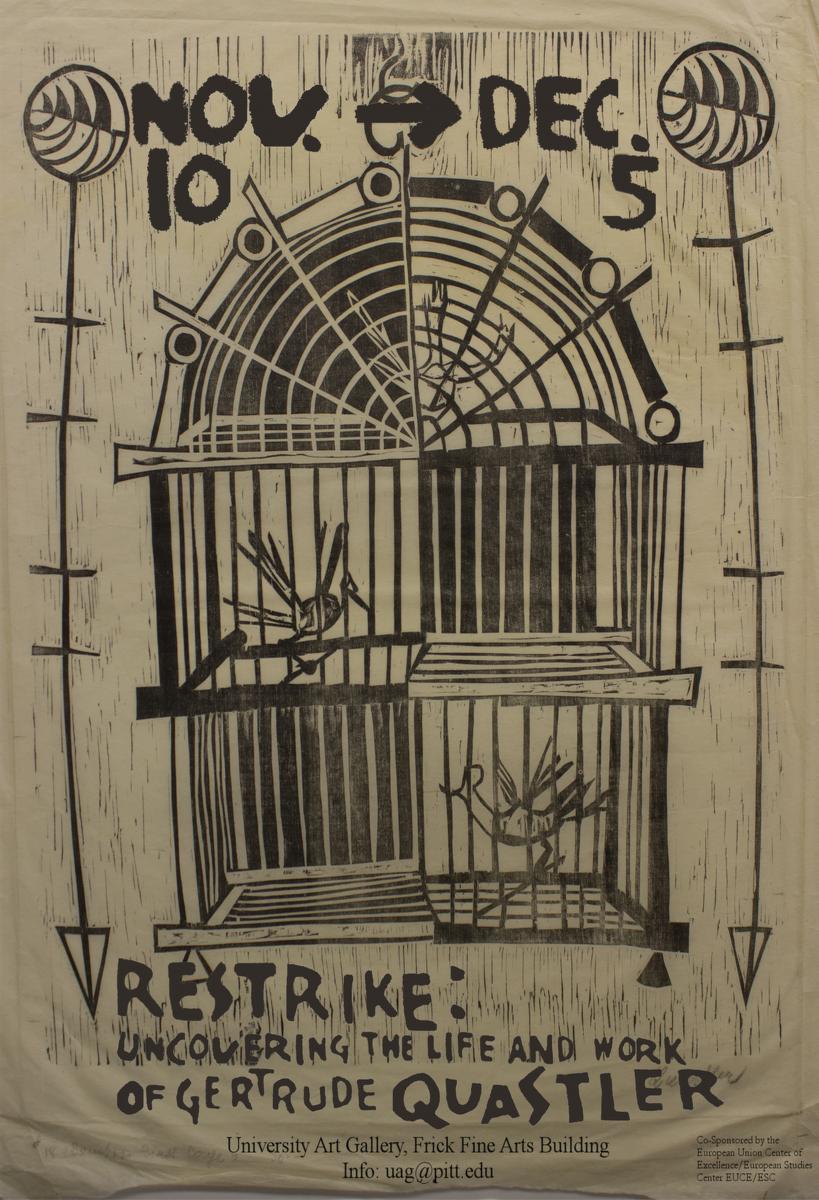
Restrike: Uncovering the Life and Work of Gertrude Quastler, features the many artistic styles of Gertrude Quastler from printmaking to sculpture. Quastler was a native Austrian who identified as an American artist after arriving in New York City in 1939. Quastler is mainly known as a printmaker but within this exhibit features that she worked in many mediums: oil, water color, metal and wood sculpture. Self-describing her work as being “stimulated by reality,” she gives a feeling of being a real person while exploring her subjects thoroughly by creating wonderful pieces of art.
Quastler’s life was strung together by love and tragedy. She contracted tuberculosis and was treated by Dr. Henry Quastler who soon after became her husband. Quastler’s health slowly deteriorated over the years but she found solace in her art. Quastler's art is known for its quirky humor, often with more sinister and surreal elements mixed in, a combination that will be further investigated within this exhibit. Uncovering elements of her within the archives of the Library of Congress and speaking with Graham Shearing, we restrike a new look at her early life, artistic process, artistic relief and written word.
The show is organized by undergraduate students enrolled in the Museum Studies Exhibition Seminar in Pitt’s Department of History of Art and Architecture. The exhibition will be presented from November 11 to December 5 at the University Art Gallery in Pitt’s Frick Fine Arts Building, 650 Schenley Dr., Oakland. The gallery hours are Monday-Friday, 10-4.
For more information, call 412-648-2423 / uag@pitt.edu or visit restrikinGQuastler.wordpress.com
Images Credit: UAG, University of Pittsburgh




Conflict Zone
October 15, 2014 - October 31, 2014
Configuring Disciplines: Fragments of an Encyclopedia
September 4, 2014 - October 5, 2014
The University of Pittsburgh History of Art and Architecture presents Configuring Disciplines: Fragments of an Encyclopedia, a collaborative exhibition project based on research by students in the Department of History of Art and Architecture.This exhibition emerged from a combined graduate and undergraduate seminar taught in Spring 2014 by Professors Drew Armstrong and Josh Ellenbogen devoted to the theme “visual knowledge.” Graduate and undergraduate students in the course worked together to explore how visual materials shape disciplinary pursuits through examination and analysis of art works, illustrated atlases, encyclopedias, scientific treatises, and other volumes and objects housed in rich collections in and beyond the city of Pittsburgh. Configuring Disciplines examines modes of visualization developed from the Enlightenment to the Modern period (18th-20th centuries) and used to represent knowledge in a variety of academic disciplines. Books and artworks drawn from Pittsburgh libraries and museums raise questions about the intrinsic qualities of two- and three-dimensional media (engraving, photography, digital projection, plaster models, buildings) and their function within fields of inquiry ranging from astronomy, botany and physics to aesthetics, ethnography and history.Through and array of portraits, maps, tables and timelines, Configuring Disciplines explores how image genres have been put to use by artists, designers and scientists to communicate ideas, principles and abstractions to audiences ranging from children to specialists.The exhibition invites viewers to consider the ways in which visualizations are deployed and manipulated to construct and transmit ideas. What assumptions are embedded in different image types? What meanings can be expressed by different media? How is knowledge suppressed or enhanced by different graphic conventions and artistic choices?Professor Armstrong and Isabelle Chartier, curator of the University Art Gallery, secured generous funding from the University of Pittsburgh Central Research Development Fund in order to stage Configuring Disciplines. The show draws on the holdings of the University of Pittsburgh Hillman Special Collections, Frick Fine Arts Library and Falk Library of the Health Sciences, the Carnegie Mellon University Architecture Archives, the Hunt Institute for Botanical Documentation at Carnegie Mellon University, the Carnegie Museum of Art, the Warhol Museum, the William R. Oliver Special Collections Room at Carnegie Library of Pittsburgh, as well as the National Library of Medicine in Washington D.C. We are grateful to these institutions for allowing us to show materials from their outstanding collections in this exhibition. We are especially proud of this display as one of the first major outcomes of our new Constellations program in the department. The Constellations are dedicated to fostering project-based and collaborative endeavors that bring faculty, students, the resources of our Gallery, and local arts institutions into dialogue with one another around forward looking initiatives to explore visual phenomena and how they shape our intellectual, cultural, and material environment.
Encounters: Art in the City
Friday, May 9th: Opening Reception 6:00-8:00pmGallery Hours: Wednesdays and Fridays 10am – 3pm, Thursdays 3 – 7pm, May 14 - May 23Encounters: Art in the City will open at the University Art Gallery on May 9th from 6:00-8:00pm, the culminating event of an experiential learning course offered by the History of Art and Architecture department that was generously funded by the University Honor’s College through a Service Learning Course Development Grant. The course was created by Gretchen Bender from HAA, in conjunction with Emily Lilly, President of the Board of the Pittsburgh Assistance Center for Educators and Students (PACES), the community partner for the course. For more information about PACES, please see their website.
The course placed five undergraduate students into the classroom at the Pittsburgh Science & Technology Academy (SciTech), a 6-12 magnet school in the Pittsburgh Public Schools district. There, Pitt undergraduates taught a group of high school students about art in public spaces in the local neighborhood and elsewhere, and aided them in the conception and creation of an their own art projects. The undergraduates also learned teaching methods through direct practice in the classroom.The exhibition displays a timeline of the project, showcasing both the SciTech students’ artwork and the experiential learning process in which the undergraduate students engaged throughout the course. Through this, the exhibition demonstrates the results of positive interactions between the Pitt undergraduates and local high school students. Questions can be directed to Gretchen Bender at ghb1@pitt.edu, 412-648-2394.
Chinese Video Art and Documentary from Gao Minglu’s Archive
18 Feb 2014 - 21 Mar 2014 University Art Gallery
This exhibition featured video work from Chinese artists produced at the turn of the 21st century. Visitors had the opportunity to experience Chinese artworks that have not been shown in the U.S. before, or have not previously been available in this part of the world. Through these artworks, the curator intended to show how Chinese artists and intellectuals responded to the rapid political and economic changes in China in the late 20th century, and how the artists used their eyes and even their own bodies to address certain social concerns. The videos can be categorized as documentation which features avant-garde activities such as performance and exhibitions, or video art with certain particular themes such as feminism and urbanization.
Studio Arts Wyoming Field Study Exhibition
15 Jan 2014 - 7 Feb 2014 University Art Gallery
Exhibition of work from students participating in the Summer 2013 Studio Arts Field Study in Wyoming, offered through the University Honors College, and Studio Arts Research Fellows conducting independent research through the Dietrich School's Office of Undergraduate Research and the University Honors College. Participating Artists: Theresa Baughman, Julia Betts, Megan Kopke, Troy Novak, Nicole Somplatsky, Kristi Werkheiser
MARTIN CREED: more and less
5 Nov 2013 - 26 Nov 2013 University Art Gallery
MARTIN CREED: more and less, a solo exhibition of Creed’s genre-bending work, was curated by the University of Pittsburgh Museum Studies Exhibition Seminar with the guidance of Nicholas Chambers, The Milton Fine Curator of Art at The Andy Warhol Museum, and the assistance of Isabelle Chartier, curator of the University Art Gallery.
Each of the five rooms of the gallery featured one Creed work, ranging from the challenging, playful video and sound installations Sick film and Blowing a raspberry to the deceptively simple Planks of wood and Work No. 960 (a row of cacti arranged in descending order of altitude). Also included are All the sculpture in a collection, which highlighted the University Art Gallery’s eclectic collection and spanned more than one location, as well as A crumpled ball of paper in every room, which was dispersed throughout the entire Frick Fine Arts building.
Though he draws on the strategies of Arte Povera, Minimalism, and Conceptual Art, Creed -- whose artistic process is intrinsically linked to his emotions, calls himself an Expressionist. The exhibition offered simple, direct questions about the function, purpose and place of art, and indeed, a piece like Work No. 121 A crumpled ball of paper in every room is so seamlessly born of and knitted into the everyday that it barely announces its presence. Utilizing seemingly mundane objects, Creed explores themes of repetition, order, comfort, equality, and isolation, inviting the viewer to discover the everyday as art for more information, download the exhibition flyer.
Rediscover: The Collection Revealed
6 Sept 2013- 19 Oct 2013 University Art Gallery
This exhibition included gems from the UAG’s permanent collection. Featuring a selection of artworks from the collection (Chinese and Japanese art, works on paper, 19th century American art, modern and contemporary art), this exhibition addressed certain conservation issues within the collection for more information download the exhibition flyer, the exhibition poster, or click here.
2013 Studio Arts Student Exhibition
3 Apr 2013 - 27 Apr 2013 University Art Gallery
The work of graduating Studio Arts majors was featured along with exceptional works, by majors and non-majors, from the range of Studio Arts courses. For more information download the exhibition flyer.
Capturing the Street: Garry Winogrand and Ned Bosnick
21 Feb 2013 - 22 Mar 2013 University Art Gallery
Curated by Isabelle Chartier, this exhibition exploreed two views of street photography through photographs from the University Art Gallery’s permanent collection. Garry Winogrand (1928-1984) and Ned Bosnick (1937-2011) were two American photographers who turned the fleeting moments of everyday life into pictures. Yet, their approaches to street photography differed slightly. Winogrand surprised people on the streets by unexpectedly taking their photographs. Bosnick, however, worked surreptitiously, keeping a physical distance from his subjects, who were unaware that they were being caught on film. Both photographers were witty observers of urban spontaneity, and their prints provoke us to question the way we consider ordinary aspects of life. Garry Winogrand is viewed as one of the great American photographers of his generation. This exhibit featured 15 photographs from the 1982 series Women are better than men. Not only have they survived but they do prevail. Ned Bosnick grew up a few miles east of Pittsburgh and traveled intensively to Europe. The 39 pictures presented in this exhibition come from the series The Talk of Paris, created during his various stays in the French capital between 1983 and 1995.
Studio Arts Exhibition: Summer 2012 Creative Projects
23 Jan 2013 - 15 Feb 2013 University Art Gallery
This exhibition featured works created by Studio Arts majors who participated in Summer 2012 Research Opportunities (Julia Betts and Christopher Cassady - Dietrich School Undergraduate Research Awards and Gianna Paniagua - Brackenridge Research Fellowship through the University Honors College) as well as the Summer 2012 Wyoming Field Study (Emily Golden, Jay Grassel, Gianna Paniagua, and Abby Ryder). Works in painting, drawing, sculpture, printmaking, photography, and mixed media were exhibited.
The exhibition waspresented by the Department of Studio Arts with the University Honors College and the Dietrich School's Office of Undergraduate Research, Scholarship, and Creative Activity. For additional information, view the exhibition flyer.
Face Value: (De)constructing Identity in Portraiture
10 Sept 2012 - 14 Oct 2012 University Art Gallery
Face Value was exhibit curated by the University of Pittsburgh Museum Studies Exhibition Seminar class, taught by Janet McCall, executive director of the Society of Contemporary Craft. Portraits have historically been used as a tool to display oneself. Selected pieces from the University Art Gallery’s collection illustrate the construction of identity in the visual arts through gender, social status, physical appearance, family legacy and more. The works reveal how the introduction of new artists, mediums, and technology pushed portraiture to evolve new forms of expression. View the Facebook page and Blog for more information.
Faces to Names: 225 Years of Pitt Chancellors' Portraits (1787-2012)
10 Sept 2012 - 14 Oct 2012 University Art Gallery
The UAG celebrated Pitt’s 225th Anniversary with an exhibition of official portraits of the University’s Chancellors. Featuring works by Gilbert Stuart, Rembrandt Peale, Elizabeth Shoumatoff, Andrey Avinoff, Leopold Seyffert - and many more, the exhibition puts faces to the names we encounter everyday on campus: Bruce Hall, Fitzgerald Field House, Litchfield Towers. Read more.
2012 Studio Arts Student Exhibition
4 Apr 2012 - 28 Apr 2012 University Art Gallery
The creative work of graduating seniors is featured in the Studio Arts Student Exhibition held in the University Art Gallery, Frick Fine Arts Building. The works of the seniors are complemented by exceptional works, by majors and non-majors, from the range of Studio Arts courses.
Studio Arts Wyoming Field Study Exhibition
11 Jan 2012 - 3 Feb 2012 University Art Gallery
This exhibition will feature the work of the four Studio Arts majors (Ashley Bowen, Nicole Hall, Josephine Norton, and Tyler Shine) who participated in the Studio Arts Wyoming Field Study in Summer 2011, offered through the University Honors College on the Spring Creek Preserve in Rock River, Wyoming.
The Imprint of War: Responses in Print
31 Oct 2011 - 5 Dec 2011 University Art Gallery
An exhibition curated by the fall 2011 Museum Studies Exhibition Seminar taught by Janet McCall, the Director of the Society for Contemporary Craft.
The Imprint of War: Responses in Print, featured three distinct print artists, working in different styles of printmaking from woodblock to intaglio, whose works are the reactions to wars, both historical and contemporary. Showing the intimate, miniature prints by Jacques Callot, the 8.5x11’’ images by Nicolas Naughton, and the large, confrontational 4x8’ works of Sandow Birk, this exhibition focused on the repetitions of history: unending wars and continual responses.
Click here to see images of the exhibition
Visit the exhibition website and blog
On a Lucky Day a Surprising Balance of Forms and Spaces Will Appear
8 Sept 2011 - 21 Oct 2011 University Art Gallery
An exhibition of work by faculty of the Department of Studio Arts. Participating Faculty: Kenneth Batista, Jeremy Boyle, JoAnna Commandaros, Anna Divinsky, Paul Glabicki, Stephen Hankin, Aaron Henderson, Delanie Jenkins, William Earl Kofmehl III, Michael Morrill, Julie Stunden, Lenore Thomas, Scott Turri, and Barbara Weissberger.
Download the exhibition flyer
MIND SPACE
14 Feb 2011 - 17 Mar 2011 University Art Gallery
 MIND SPACE, an exhibition curated by Gao Minglu features the work of artists Zhu Jinshi, Zhang Yu, Lei Hong and He Xiangyu at the University of Pittsburgh Art Gallery. The exhibition explores MAXIMALISM, the philosophical core of Chinese abstract art and a concept that places emphasis on the spiritual experience of the artist in the process of creation. Maximalism’s primary objective is to question and overthrow assumptions about the meaning of art.
MIND SPACE, an exhibition curated by Gao Minglu features the work of artists Zhu Jinshi, Zhang Yu, Lei Hong and He Xiangyu at the University of Pittsburgh Art Gallery. The exhibition explores MAXIMALISM, the philosophical core of Chinese abstract art and a concept that places emphasis on the spiritual experience of the artist in the process of creation. Maximalism’s primary objective is to question and overthrow assumptions about the meaning of art.
In Maximalist theory, the meaning of a painting is not expressed by its surface or subject matter and a painting is not considered a unique and privileged product of human culture containing commonly held values of virtue and creativity. According to Maximalists, the meaning of art goes beyond language (yan bu jin yi) and comes from a dialogue between the artist and the material object. It is a response to the rapidly changingmaterial world.
While the work in the exhibition is similar in appearance to modern or conceptual art, it has a different theoretical foundation. Most Maximalist artists consider their work to be incomplete and fragmented records of daily meditation. They do not adhere to compositional principles or ideas and their art is natural, repetitious and fragmentary. The work functions as what is often called aliushui zhangin Chinese, literally, “an account book of streaming water,” which means an everyday record of something that is extremely unimportant, micro-trivial and fragmented from daily life.
This exhibition was first presented at Contrasts Gallery in Shanghai in the summer of 2010, and will travel to Dallas, New York and Los Angeles, introducing the USA to a new realm of art and expression.
Click here to see images of the exhibition
SLAG: What's Left After Industry?
02 Nov 2010 - 29 Nov 2010 University Art Gallery
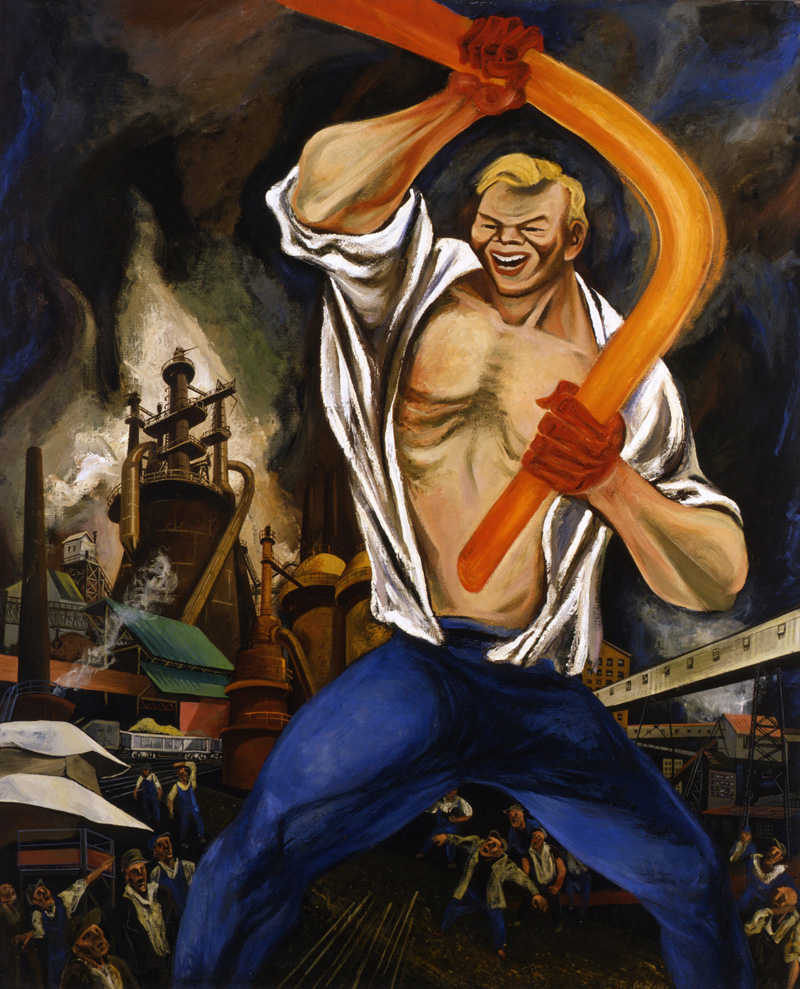 Pittsburgh, Pennsylvania's reformation from the manufacturing metropolis of Steel City to the green, cultural center of America's most livable city has not gone unnoticed. What forces have worked to cause this change in the city landscape? The transcending image of the industrial progress of southwestern Pennsylvania lives on in the University’s Gimbel Collection, a group of paintings originally commissioned by the department store in 1946. Photographs by the Pittsburgh native Mark Perrott document the dismemberment of the Eliza Furnace, which once stood in the South Side of Pittsburgh. Finally, local artists share their contemporaneous perceptions of Pittsburgh in their artwork. This exhibition represents the city in three stages: the industrial construction, encapsulated by the Gimbel Collection, purifying deconstruction, captured in the Eliza photographs, and the retrofitting renewal, realized in the student artwork, illuminates the transitional narrative of the city of Pittsburgh since the industrial revolution.
Pittsburgh, Pennsylvania's reformation from the manufacturing metropolis of Steel City to the green, cultural center of America's most livable city has not gone unnoticed. What forces have worked to cause this change in the city landscape? The transcending image of the industrial progress of southwestern Pennsylvania lives on in the University’s Gimbel Collection, a group of paintings originally commissioned by the department store in 1946. Photographs by the Pittsburgh native Mark Perrott document the dismemberment of the Eliza Furnace, which once stood in the South Side of Pittsburgh. Finally, local artists share their contemporaneous perceptions of Pittsburgh in their artwork. This exhibition represents the city in three stages: the industrial construction, encapsulated by the Gimbel Collection, purifying deconstruction, captured in the Eliza photographs, and the retrofitting renewal, realized in the student artwork, illuminates the transitional narrative of the city of Pittsburgh since the industrial revolution.
The Lives They Left Behind: The Willard Suitcase Exhibition
02 Sep 2010 - 23 Sep 2010 University Art Gallery
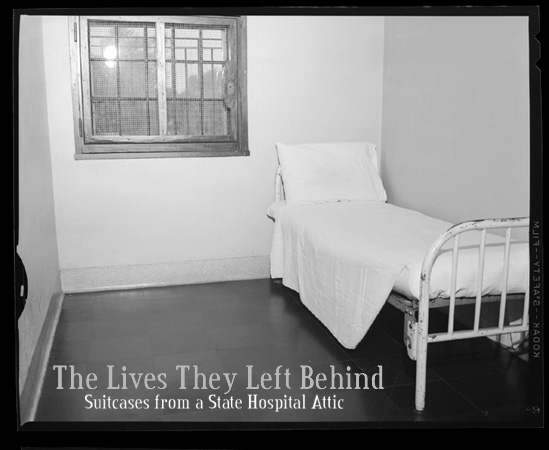 When Willard Psychiatric Center in New York's Finger Lakes closed in 1995, workers discovered hundreds of suitcases in the attic of an abandoned building. Many of them appeared untouched since their owners packed them decades earlier before entering the institution.
When Willard Psychiatric Center in New York's Finger Lakes closed in 1995, workers discovered hundreds of suitcases in the attic of an abandoned building. Many of them appeared untouched since their owners packed them decades earlier before entering the institution.
The suitcases and their contents bear witness to the rich, complex lives their owners lived prior to being committed to Willard. They speak about aspirations, accomplishments, community connections, but also about loss and isolation. From the clothing and personal objects left behind, we can gain some understanding of who these people were before they disappeared behind hospital walls. We can picture their jobs and careers, see them driving cars, playing sports, studying, writing, and traveling the world. We can imagine their families and friends. But we can also see their lives coming apart due to unemployment, the death of a loved one, loneliness, poverty, or some other catastrophic event.
The suitcases and the life stories of the people who owned them raise questions that are difficult to confront. Why were these people committed to this institution, and why did so many stay for so long? How were they treated? What was it like to spend years in a mental institution, shut away from a society that wanted to distance itself from people it considered insane? Why did most of these suitcase owners live out their days at Willard? What about their friends and families? Are the circumstances today any better than they were for psychiatric patients during the first half of the 20th century?


